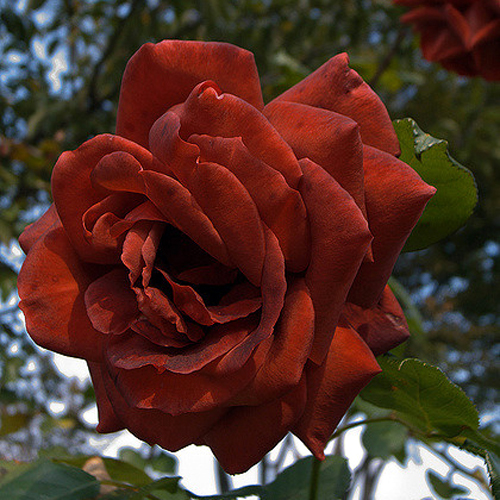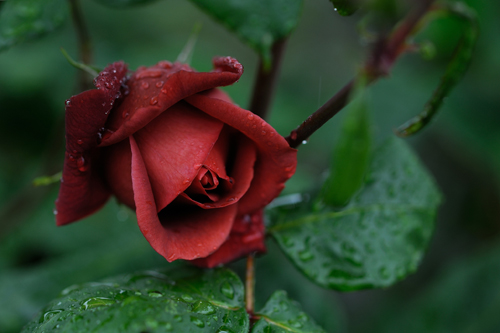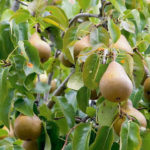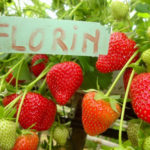Rose Terracotta
Among the varietal roses today you can see plants with the most unusual shades of buds. Black, blue, striped, two-tone - everyone will choose something to their liking. The heroine of this article has flower petals that have a shade of unbaked clay. In addition, the crop is very hardy and blooms profusely. We are talking about the Terracotta variety.

History of origin
The variety was bred in France in 1994. The place of its appearance is the Meilland flower nursery. The plant belongs to the Grandiflora group. Breeders obtained it using the method of crossing a tea hybrid and a floribunda. Alternative names of the variety: My Lovely, MEIcobuis and Terra Cotta.
Description of appearance and features
By settling the Terracotta variety in your garden or flower garden, you will acquire an upright, vigorous shrub with straight shoots, the height of which does not exceed 75 cm and the width is 0.6 meters. The stems of a young rose are light green with a reddish-brown tint, and an adult one has a rich green color. They have thorns, but in moderation. Depending on the age of the crop, they can be red-green (on young branches) or green-yellow (on more mature stems). The leaves of the shrub are dense, dark green, semi-glossy.
The sonorous name of the culture is due to the shade of the flowers formed on it. Some call it brick red, while others call it smoky brown. In reality, the flowers of the Terracotta variety are coral with a hint of cinnamon. Their shape is classic, and the number of silky petals in each flower varies from 18 to 25 pieces. The doubleness of the flowers is pronounced. As the buds bloom, the edges of the petals become speckled, which makes the crop look even more attractive. Single buds of the Frenchwoman are dense, goblet, with a high center. The diameter of the flowers is 12-15 cm. The flowering noble plant spreads around a pleasant, but not too strong floral aroma. Other rose owners claim that the flowers of the French diva do not emit a smell at all.
The decorative perennial blooms luxuriantly and profusely, as befits a floribunda, the features of which it has inherited. The colder the weather is, the more intense the color of the flower petals. The flowering of the culture is continuous, it lasts throughout the season.

The plant is quite resistant to winter frosts and diseases. Terracotta can withstand temperatures as low as -23-25 ° C and rarely get sick with black spot and powdery mildew. The rains do not spoil the beauty of the luxurious flowers, which cannot be said about the midday summer sun: under its influence, the spectacular color turns pale, fading, and the petals bake and dry out. Strong shoots of the rose do not bend or damage under the weight of the inflorescences.
Growing and care
The Terracotta variety loves sunlight, but it is better to place it in that sector of the plot where the sun illuminates the entire first half of the day, and where the plant will be in partial shade at midday. This is necessary to prevent burnout of the pleasing color of the flower petals and the appearance of burns on their surface. Drafts can also damage perennials. In addition, it should not be planted in a lowland where groundwater is close to the soil surface. The soil for the plant is used loose, light, with a high level of fertility and a slightly acidic reaction (the recommended pH value should be in the range from 5.6 to 6.5). In principle, any soil at your disposal will do - you just need to fertilize it with humus and peat in advance, add sand if necessary.
Roses are planted in spring or autumn, before the onset of frost. A hole 50-60 cm deep is dug in the selected area. A layer of gravel, fine gravel or pebbles is laid on its bottom. This is necessary so that the water during irrigation and rain does not stagnate in the soil under the flower. Then organic fertilizer is introduced into the hole, and then a part of the earth is poured.After that, the seedling is lowered into the pit and its roots are covered with the remaining soil so that the root collar of the plant is 3-4 cm below the surface of the substrate. At the end of planting, the perennial is watered abundantly.

In order for the plant to develop normally and delight the eye with magnificent flowers in large quantities, it must be carefully looked after. The main activities for the care of Terracotta are:
- Moistening the soil under the flower - produce 1-2 times a week with settled, slightly warm water. Liquid consumption for an adult Terracotta bush is 2-3 buckets.
- Regular feeding. In the spring, an organic fertilizer is applied under the rose, during the period when buds appear on the perennial and in the flowering phase, and also 2 weeks after flowering - a mineral concentrate saturated with potassium and phosphorus.
- Loosening and mulching of the soil in the zone of the near-trunk circle - shown about a day after the next watering. Peat or dry grass is used as mulch.
- Weeding - needed as needed.
- Pruning - it happens in spring and autumn. The first has as its purpose to leave only the strongest shoots on the plant, as well as to give the crown of the perennial a neat shape. The second is sanitary and prepares the culture for winter.
The rose must be covered with the arrival of cold weather. Spruce spruce branches and non-woven material, as well as a film, are used as insulation. Before this, the bush is covered with dry soil.
Use cases
The Terracotta variety can be the highlight of your garden or rose garden. The variety is suitable for decorating round flower beds, low hedges, for placement in curbs, ridges and mixborders. Ornamental shrubs look great near the gazebo, at the facade of the dwelling, at the entrance to the house or in the front garden, near the sculptural compositions. You cannot take your eyes off a perennial if it is planted against the background of a bright green grass lawn in splendid isolation or in groups of 3-5 bushes. The plant goes well with coniferous, herbaceous, decorative deciduous and flowering crops. It is also included in tree-shrub garden and mixed compositions. Terracotta is actively used for cutting, as the gorgeous flowers of this rose can stand in water for up to two weeks.








